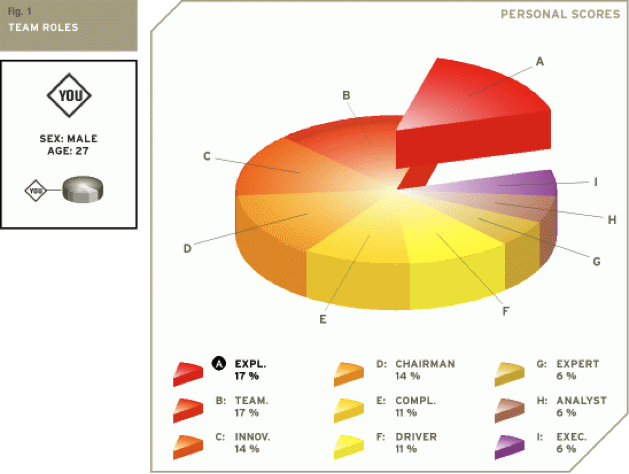
Belbin Team Roles Free Test
Why is your team successful? Why is your team failing? Belbin has an answer. Raymond Meredith Belbin is the leading authority on team roles. His research, that spanned more than 40 years, showed that it is more important how members fit together than how smart they individually are. Successful teams were comprised of members with different and compatible roles, while unsuccessful ones were characterized by constant conflicts between members with similar tendencies and personalities. What Happens When You Make a Team out of A Players Belbin’s research produced several that enabled experts to determine if an individual will become a business superstar.
Those who passed with flying colors were smarter, had better analytical skills, and were better than others in almost every aspect. Logically, the next step in research was to create a super team made up entirely of these outstanding individuals.
Belbin named them the Apollo team. Expectations were high as everyone thought the superstars of the Apollo team would achieve success effortlessly. However, it turned out that team made out of the strongest individuals is not as effective as it should be - what’s more, it usually performed worse than a regular team. The Apollo team members had spent most of their time debating and trying to persuade other members that their point of view was the correct one. However, no one was willing to change their point of view and each member loved to find holes in each others’ arguments.
The team couldn’t reach a decision together while more pressing jobs were completely neglected. Belbin Team Roles The Apollo team experiment proved that good teams require balance. Over the course of years, Belbin defined nine possible team roles, which he categorized into three groups: Action-Oriented Roles Action oriented roles focus on improving team’s performance, putting ideas into action, and meeting deadlines. The three action-oriented roles are: • Shaper - extrovert that questions assumptions • Implementer - brings self-discipline to the team • Completer Finisher - pays attention to smallest details and makes sure things are done right People-Oriented Roles People oriented roles bring people and ideas together. The three people oriented roles are: • Coordinator - brings order into the team • Team worker - provides support to the team in a diplomatic way • Resource Investigator - develops outside contacts Thought-Oriented Roles Thought oriented roles analyze options and provide technical expertise.

Contoh naskah dialog drama 6 orang percakapan bahasa sunda di. The three cerebral roles are: Plant - comes up with innovative, ground-breaking solutions Monitor evaluator - assesses team decisions analytically and critically Specialist - experts in particular subject matter Roles characteristics, contribution, and weaknesses Each Belbin team role comes with its set of characteristics, strengths, and weaknesses (some of which are allowable and others that are not). Ideal Team for a Small Business To have a well-functioning team, it would be ideal to have a member for each role. However, to make that happen, you would need a team of at least 9 people. Since small businesses often work with smaller teams, it is only fair to ask: how would Belbin construct a successful small team?
Firstly, it would be ideal if the team had 6 members. Belbin’s research has proven that teams with less than 6 members struggle with work and overlapping duties, while teams with more members (7+) tend to get lazy and do the same amount of work as the six-member team.
Secondly, Belbin claims that successful small team should have one Coordinator, one Implementer, and one Plant. Those are a must. Choose other roles as you see fit.
You are probably wondering: “If I have a task that requires creative solution, why don’t I just gather three ‘Plant’ members and let them work their magic?” It turns out, you shouldn’t do this. During his research, Dr. Belbin wanted to know how teams made of people with similar personalities function in everyday business environment, and how they cope when it comes to problem-solving. To achieve this, he divided examinees into four groups based on their personalities: • Stable Extroverts - Excellent communicators. They are best as sales representatives or HR managers. • Anxious Extroverts - Ideal for high-paced working environments.